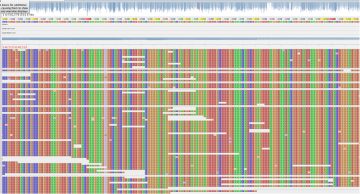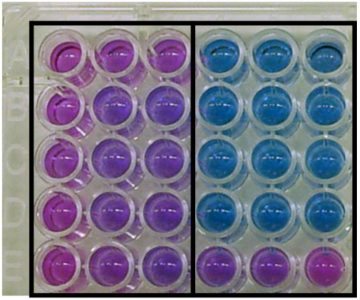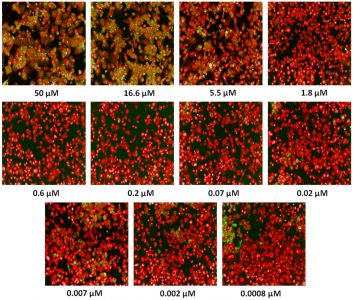Mtb is an obligatory intracellular parasite whose primary site of infection is the circulating alveolar macrophage. Macrophages are the front line of defense against invading microbes. Yet, traditionally, drug screening has been performed in vitro on bacteria only, which hardly represents disease conditions. Therefore, in collaboration with GlaxoSmithKline (GSK), we have developed an intracellular high-throughput screening (HTS) assay for finding new anti-mycobacterial compounds active in human macrophages. Our assay uses raw intensity-based luminescence as a lower-cost alternative to the image-based high-content screening (HCS) method. Specifically, a “macrophage-like” cell line is infected with Mtb overexpressing firefly luciferase and subjected to treatment with compounds of interest. Light is generated by viable bacteria and detected with a luminometer. The greatest benefit of this assay is its speed and simplicity. No additional sample manipulation and incubation is required prior to performing the final reading. Therefore, data can be collected in as little as 5 min post-compound treatment. This extra efficiency over imaging-based methods is highly beneficial in screening campaigns involving large compound libraries.

WGS of resistant mutants. Courtesy of Dr. Clement Tsui.
In parallel to the raw-intensity approach which monitors drug efficacy, we check the cytotoxicity level of the drug candidates against the macrophages as well as the efficacy of the drug candidates in vitro. In our initial study with GSK testing 158 compounds with known in vitro anti-Mtb activity, more than one-third of the test compounds exhibited higher antimicrobial activity inside macrophages, some with as much as 20-fold more potency, compared to in vitro. These results clearly showcase the potential increase in efficacy one may observe when the host cell is capable of enhancing inhibitory activities. This was the first evidence of its kind to justify advocating for large-scale HTS using an intracellular mycobacterial model.

Resazurin assay for HTS. Courtesy of Xingji Zheng.
Currently, we are expanding our screening efforts and working to optimize and characterize numerous lead compounds from multiple chemical and natural product libraries that we have identified using this approach through collaboration with industry and academic groups. We are looking to identify the cellular targets of these compounds and isolate resistant mutants in order to determine their mechanism of action. These studies will identify new drug targets and yield novel information about microbial biology behind how Mtb is able to successfully infect, reside and acquire drug resistance within the human host. Furthermore, our project will enhance our ability to better define and understand TB disease characteristics in order to combat this deadly pathogen.
